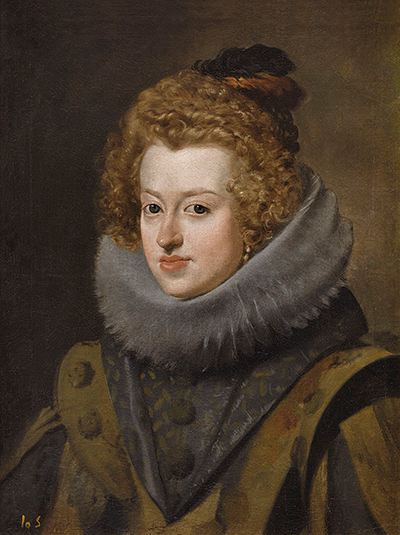This delightful portrait of Maria Anna of Spain by Diego Velazquez can now be found at the Museo del Prad in Madrid, Spain
The famous Spanish painter produced this artwork in 1630, at a time when he was just starting to develop as an internationally recognised artist. He was to become exceptionally well connected within several royal families across Europe, particularly in his native Spain as well as some of the Italian Papal States.
The distribution of wealth during this period in European history was particularly extreme, meaning artists would need to lure those in the highest reaches of society in order to ensure that their careers could be financed. Most successful artists would come from priviledged backgrounds themselves, as without that there was no opportunity to follow this career path. (You could argue that this situation is still much the same today.)
Maria Anna, Infanta of Spain was later to become Archduchess of Austria, Queen of Hungary and these prominent positions ensured that her portrait was painted on several occasions. Other notable works came from Bartolomé González y Serrano, Juan Pantoja de la Cruz, Juan van der Hamen and Frans Luycx. The majority of these are spread between museums in Austria and Spain.
There was a strong link between Spain and the areas now known as Germany and Austria during the time of Maria Anna's reign. She was proudly Spanish and passionately followed elements of that culture despite being embroiled in several political situations during her life as different groups fought to gain and strengthen their respective power bases.
Maria Anna was the brother of Philip IV of Spain who was capturing by Velazquez in several paintings. He is perhaps the most famous ruling monarch to have been painted by this artist. It was also a common tradition at this time to trade portraits of each other when meeting other major dignitaries.




